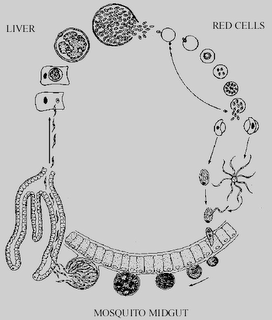Tuesday, November 14, 2006
Malaria

Approximately 300 million people worldwide are affected by malaria and between 1 and 1.5 million people die from it every year. Previously extremely widespread, the malaria is now mainly confined to Africa, Asia and Latin America. The problems of controlling malaria in these countries are aggravated by inadequate health structures and poor socioeconomic conditions. The situation has become even more complex over the last few years with the increase in resistance to the drugs normally used to combat the parasite that causes the disease
Malaria is caused by protozoan parasites of the genus Plasmodium. Four species of Plasmodium can produce the disease in its various forms:
Plasmodium falciparum
Plasmodium vivax
Plasmodium ovale
Plasmodium malaria
Plasmodium vivax
Plasmodium ovale
Plasmodium malaria
P. falciparum is the most widespread and dangerous of the four: untreated it can lead to fatal cerebral malaria.
Malaria parasites are transmitted from one person to another by the female anopheline mosquito. The males do not transmit the disease as they feed only on plant juices. There are about 380 species of anopheline mosquito, but only 60 or so are able to transmit the parasite. Like all other mosquitos, the anophelines breed in water, each species having its preferred breeding grounds, feeding patterns and resting place. Their sensitivity to insecticides is also highly variable.
No comments yet